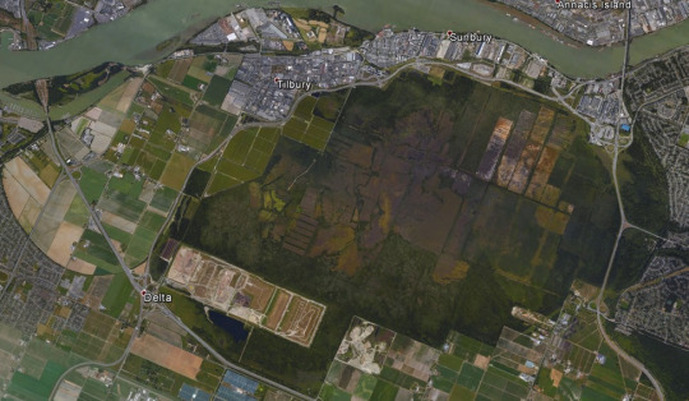11/07/2016
Excellent Delta Public Safety Response

Many factors influence the success of business continuity and the speed with which event affected communities and proximal businesses can resume.
The right application of public safety resources and local infrastructure for example. The rapid response by the Delta Corporation to the Burns Bog last week and the immediate opening of the Emergency Operations Centre resulted in timely coordinated actions that absolutely reduced the negative impact of this fire event.
Burns Bog is an ombrotrophic peat bog located in Delta, British Columbia, Canada. It is the largest raised peat bog and the largest undeveloped urban land mass on the West Coast of the Americas.
The fact that the fire was 100% contained in a few days was an excellent outcome and again a testament to pre-planning. The communication from the Mayor, Police and Fire Chiefs, outstanding. The fact that evacuation was contained to a specific area and lasted only 24 hours was also a significant result.
HOW CAN THE PUBLIC AND PRIVATE SECTORS WORK TOGETHER?
There has been a convergence in business continuity and emergency management fields and a convergence of public and private sector efforts. Disasters such as the Fort McMurray Wildfire are showing the vital inter dependencies of the public and private sectors. Private Business has a critical role to play in support of the public safety agencies and themselves.
“When the dust has settled your business survival could depend on the speed with which you can return to normal operations.”

HOW CAN YOU MITIGATE THE RISK TO YOUR BUSINESS?
Businesses everywhere face an enormous number of exposures to threats and hazards, and risk refers to the measurement of the frequency, probability, and severity of these exposures. Risk management helps business executives study and manage risks so they can prioritize them and then plan and take action under limited budgets. Risk management is at the foundation of planning and action against risks.
Contact a reputable critical continuity and emergency management company to conduct a hazard risk vulnerability assessment, and to work with you to ensure you have the right plan in place to safeguard your business.
Contact a similarly reputable security risk management company to conduct a threat risk vulnerability assessment of your business.
Contact us for more information.
Business continuity is defined by ASIS international [2004:7] as follows:
“a comprehensive managed effort to prioritize key business processes, identify significant threats to normal operation, and plan mitigation strategies to ensure effective and efficient organizational response to the challenges that surface during and after a crisis.”

The essence of business continuity is an up-to-date, comprehensive plan to increase the likeliness of survival of a business when it faces an emergency. Examples of topics in the plan are employee safety; IT backup; customer support; and limited, if any, recovery time. There is a lack of consistency in the private sector with business continuity planning. Top executives view and support it differently among businesses.
The business continuity guideline [ASIS international, 2004] offers an in-depth, multi step process for business continuity planning. https://www.asisonline.org/Pages/default.aspx
It includes interrelated processes and activities that help in creating, testing, and maintaining an organization-wide plan for emergencies. Here is a sample of questions from the appendix of the guideline:
METHODOLOGY FOR BUSINESS CONTINUITY
A barrier to planning and preparation is lack of support and funding from management. Business continuity planning needs to refer to business survivability, cost of downtime [e.g., lost revenue, lost customers], penalties from contract stipulations on deadlines, and legal requirements [especially as a public company]. The seven step methodology is as follows:
1. Risk assessment report containing the identification of critical functions; business process threats and vulnerabilities, ranked by risk level; and risk mitigating safeguards and costs.
2. Business impact analysis report containing critical business functions and workflow, qualitative and quantitative impacts of disruption, and recovery time objectives.
3. Disaster recovery plan containing resources, actions, and time to manage the recovery.
4. Business recovery plan concerning advance plans, arrangements, and procedures for the complete recovery of business processes, including employees, work space, equipment, and facilities.
5. Business resumption plan containing plans for continued availability of essential business processes and operations. It includes facility and operations management, as well as IT systems.
6. Contingency planning concerning plans to respond to specific system or operation failures. Resources may include alternate work areas, reciprocal agreements, workaround procedures, and replacement resources.
7. Crisis management focuses on overall coordination of organizational response to a crisis to protect people and minimize damage to profitability, reputation, or ability to operate.
UP TO DATE, TRAINED AND TESTED PLAN
So in conclusion none of us should be waiting to receive first responder’s assistance for business resumption; we should have an up to date, trained and tested plan in place which should cover all identified hazards and threats; natural, intentional; or accidental in origin; all realistic risk eventualities.
We should be meeting our public safety teams halfway by sharing our business continuity plans, fire safety plans, etc., with them to facilitate rapid decision making and critical communications.
For more information please contact www.lgrmg.ca